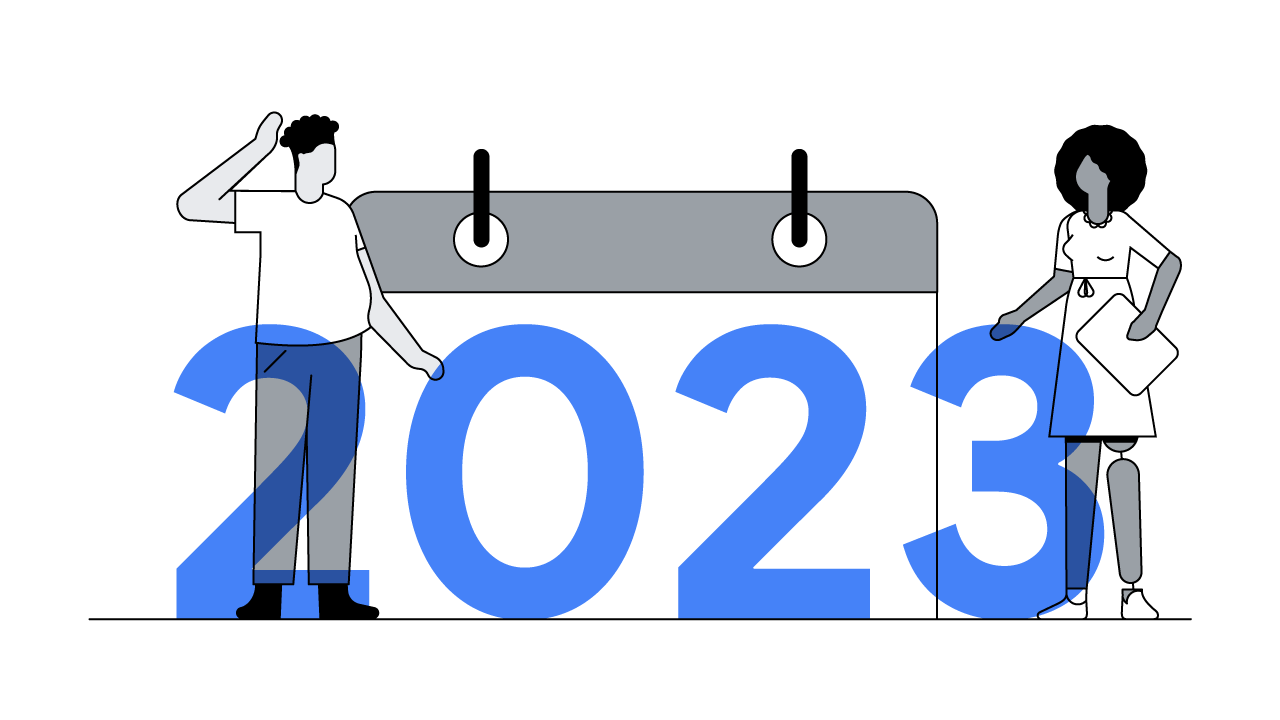As marketers, we’re often focused on refining keywords, copy and calls-to-action, even as the people that we’re looking to engage are drawn to immersive and visual experiences. With new technology, brands now have the opportunity to adapt and lean into what really engages potential customers.
“We’re evolving to a more visual and immersive web,” says Jennifer Liu, director of product management at Google, “with the smartphone camera powering a new visual era of helpfulness.”
Seeing is often understanding
Whether you’re learning about the solar system or choosing a new colour scheme for your home, seeing is often understanding. With computer vision and augmented reality (AR), the camera has become a powerful visual tool to help you understand the world around you.
You’re most likely familiar with the sort of AR technology that uses your phone’s camera to overlay digital information and content onto your physical surroundings. If you’ve ever used an app that places 3D objects, such as furniture, in your own space or added special effects to your selfie, you’ve used AR.
We can now use smartphones to explore the world around us and even learn about new things. This presents a massive opportunity for brands to reimagine their customer experiences and differentiate themselves. Take MAC Cosmetics, for example. The beauty brand launched a YouTube pilot, in partnership with FameBit by YouTube, that allows people to virtually try on lipstick colours using their smartphone.
Other AR experiences allow you to use your smartphone camera to grab text and images from the outside world and interact with them in a more engaging way. Whether that’s instantly translating a foreign-language restaurant menu into your native language or identifying a painting that you see.
Search what you see
Today smartphone AR technology can do more than just add fun filters or virtual content to our physical world. AR enables our devices to perceive the world like we do: visually, immersively and in three dimensions. The camera doesn’t just augment our reality; it understands reality, relaying relevant information back to us in the context of the world around us.
This technology is having a profound impact on the way that people search. “Search,” says Liu, “isn’t just about the same old text input, website-suggestions output anymore.”
Search is becoming a much more visual experience, allowing people to access richer information about what they see using their smartphone’s camera. Say, for example, you like something that your friend is wearing, but it’s difficult to describe in words. You can use Google Lens, which has already been used more than a billion times, to identify the item, surface relevant information and even get styling recommendations from around the web.1
And when you have questions about the things in your physical surroundings — such as “What is that sign saying?” or “What breed is that adorable puppy?” — Lens can put the answers in real-world context and provide information when and where it’s most useful.
More than a trend
While visual search and AR might seem like the latest shiny objects, they’re not a passing trend. People are starting to understand that this technology can help them with all kinds of tasks. A recent survey conducted by Google found that 6 in 10 people say that they want to be able to visualise where and how a product could fit into their lives.2 Car buyers, for instance, can now project a 3D image of a custom-designed car onto their driveway and get a sense of what it looks like before visiting the dealership.
Two-thirds of people also say that they are interested in using AR to help them when shopping.3 New Balance has created 3D models of its trainers — integrated across its website, search and immersive display ads — allowing shoppers to view the shoes up close and from multiple angles, or hold them next to their clothes to see if they match.

“For many consumers,'' says Liu, “it’s the next best thing to actually having the product with them in their own home.”
MAC’s lipstick try-on pilot is a good example. During the campaign, which featured 12 YouTube creators, video viewers spent 45 seconds on average virtually trying on lipstick and collectively sampled more than 4.3 million shades. This creator campaign didn’t just drive virtual lipstick trials; MAC also saw a 1.81% shop click-through rate. “When it comes to beauty,” notes Liu, “AR is no longer nascent; it’s table stakes.”
Brands can harness this technology to capture attention, educate potential customers, expedite the path to purchase and ultimately drive engagement. “As technology continues to improve and usage increases,” says Liu, “AR will soon become a universal language on the web. The best part will be seeing how brands push the boundaries to deliver amazing and helpful experiences for consumers.”




